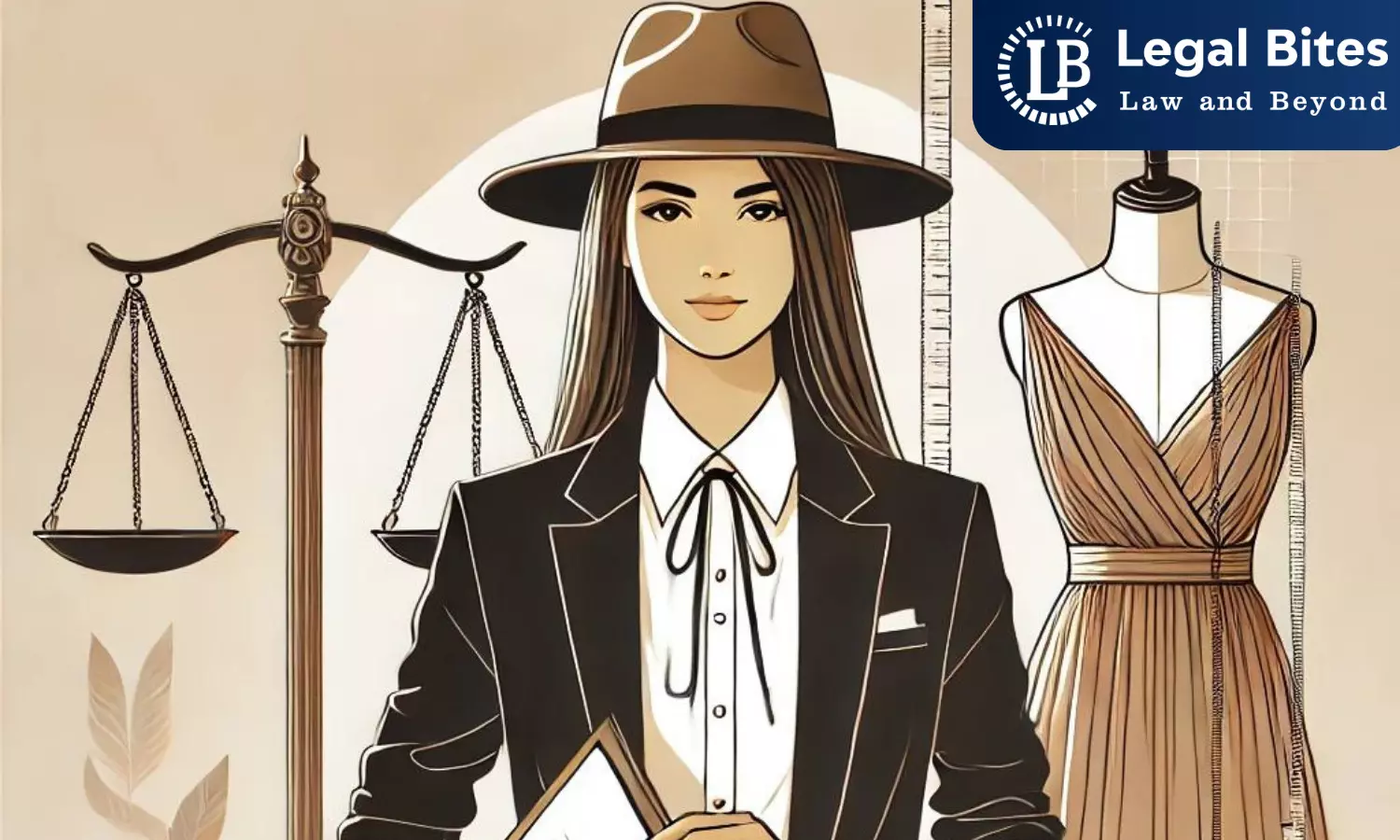Work Profile of a Fashion Lawyer
Explore how fashion lawyers protect brands, handle contracts, and solve legal issues to keep the fashion industry innovative and legally sound.

The fashion industry is a dynamic, fast-paced sector that intersects with intellectual property law, contract law, labour law, and consumer protection law, among others. Fashion lawyers, specializing in this niche, provide essential legal services to designers, retailers, manufacturers, and other stakeholders in the industry. The role of a fashion lawyer goes beyond typical legal responsibilities, requiring a deep understanding of the fashion world, its trends, and its unique legal challenges.
Key Responsibilities of a Fashion Lawyer
1. Intellectual Property Protection
Intellectual property (IP) is a cornerstone of the fashion industry, as brands need to protect their creative designs, logos, and brand names. Fashion lawyers ensure that their clients’ trademarks, patents, and copyrights are properly registered and enforced.
Trademarks are vital for protecting the brand identity of fashion houses. From the name of a label to logos, distinct elements are trademarked to prevent misuse by competitors. Copyright protection is important for artistic creations, such as specific fabric designs or patterns.
Fashion lawyers assist in drafting and filing applications with IP offices, monitoring the market for potential infringements, and litigating when necessary. They also deal with counterfeit products, which is a significant issue in the global fashion market. By taking action against counterfeiters, they protect the brand value and reputation of their clients.
2. Contract Negotiation and Drafting
Contracts are fundamental to every business transaction, and the fashion industry is no different. Fashion lawyers draft and negotiate various types of agreements, including manufacturing agreements, licensing deals, distribution contracts, and endorsement agreements with celebrities and influencers.
One critical area is licensing agreements, where fashion brands license their products to third-party manufacturers or retailers. These agreements must be carefully drafted to ensure that the brand's reputation is maintained, and the products meet certain standards. Lawyers also help negotiate collaborations between designers and brands or endorsement deals with high-profile personalities. Such contracts have a significant impact on a brand's public image and sales.
3. Employment and Labour Law
The fashion industry is known for its complex employment relationships, from in-house designers to freelance models, photographers, and stylists. Fashion lawyers must understand employment law to draft contracts that comply with local labour laws, ensuring fair wages, safe working conditions, and other protections for employees.
Freelancers, often hired for specific projects, also require well-drafted agreements to protect both parties' interests. Fashion lawyers also handle issues related to wrongful termination, discrimination, and workplace safety violations, especially in manufacturing facilities.
4. Consumer Protection and Advertising
Fashion brands rely heavily on advertising to build their image, and the rise of influencer marketing has introduced new challenges. Fashion lawyers must be familiar with consumer protection laws and regulations governing advertising and endorsements, ensuring that all campaigns are compliant.
For instance, misleading advertising, false claims about sustainability, or health benefits of certain materials could lead to legal action. Lawyers must ensure that all marketing materials are accurate and that social media influencers disclose their partnerships as per Federal Trade Commission (FTC) guidelines.
5. Sustainability and Ethical Sourcing
With growing awareness around environmental sustainability and ethical practices, fashion lawyers play a key role in guiding brands on sustainable practices. This includes advising on sourcing materials, manufacturing processes, and supply chain transparency.
Lawyers must stay updated on international laws and regulations regarding ethical sourcing, human rights issues in manufacturing facilities, and eco-friendly practices. Fashion brands are increasingly being held accountable for their environmental impact, and fashion lawyers need to ensure compliance with various environmental laws and industry standards.
6. Litigation and Dispute Resolution
Fashion lawyers often engage in litigation and dispute resolution. This may involve intellectual property disputes, contract breaches, or even employment-related issues. Litigation can be costly and time-consuming, so many fashion lawyers seek to resolve conflicts through mediation or arbitration to maintain the business relationships that are crucial in this industry.
Some common legal disputes in fashion include copyright infringement cases where a designer accuses another of copying their designs or issues related to licensing agreements where a brand believes their intellectual property has been misused.
7. Global Fashion and Trade Laws
The fashion industry is highly globalized, and brands often source materials or sell products internationally. Fashion lawyers must understand international trade laws, customs regulations, and import-export restrictions. They help fashion companies navigate the legal complexities of international expansion, ensuring that their operations comply with the legal requirements of multiple jurisdictions.
In addition, fashion lawyers may handle issues related to trade agreements and tariffs, which can affect the pricing and availability of fashion products across borders.
Required Skills and Qualifications for Fashion Lawyers
A fashion lawyer must possess several core skills to succeed in this specialized field:
- Strong IP Law Knowledge: Understanding intellectual property law, particularly concerning trademarks, patents, and copyright protection, is essential.
- Contract Law Expertise: Fashion lawyers must be able to negotiate and draft a variety of contracts, from licensing agreements to employment contracts.
- Awareness of Consumer Protection Laws: Knowing the intricacies of advertising regulations, consumer rights, and sustainability laws is crucial in protecting clients' reputations.
- Dispute Resolution: Lawyers in the fashion industry often need to resolve disputes outside of court through mediation or arbitration.
- Global Legal Acumen: Since the fashion industry operates globally, fashion lawyers must be familiar with international trade laws, customs regulations, and environmental compliance.
Opportunities and Career Growth in Fashion Law
With the continuous evolution of fashion trends and the increasing legal challenges in areas like intellectual property theft and sustainability, there are growing opportunities for lawyers specializing in this field.
Law firms with fashion law departments or boutique firms dedicated to fashion law offer entry and mid-level positions for lawyers. Additionally, in-house roles at fashion houses, retail giants, and luxury brands are becoming more common. These roles offer a unique blend of creative and legal challenges, making it an attractive career for those passionate about both law and fashion.
Additionally, with sustainability becoming a major concern for consumers and governments alike, fashion lawyers who specialize in environmental regulations and supply chain transparency will find their expertise in high demand.
Conclusion
The work profile of a fashion lawyer is both diverse and dynamic, encompassing a range of legal fields including intellectual property law, employment law, contract law, and sustainability regulations. As the fashion industry continues to evolve, particularly with the integration of technology and the growing importance of sustainability, the role of fashion lawyers will only become more vital. Their work ensures that fashion brands not only create innovative and beautiful products but also operate within a robust legal framework that protects their interests and complies with global standards.
References:
[1] Melissa Silvanic, Navigating Fashion Law: Leading Lawyers on Exploring the Trends, Cases, and Strategies of Fashion Law (Published: 1st January, 2012)
[2] Anuj Kumar, A Practical Guide to Fashion Law (Published: 21st February, 2022)
[3] Sanjeev Kumar, Handbook on Fashion Law (Published: 13th March, 2020)
[4] Barbara Kolsun and Guillermo C. Jimenez, Fashion Law: A Guide for Designers, Fashion Executives, and Attorneys (Published: 8th May 2014)

